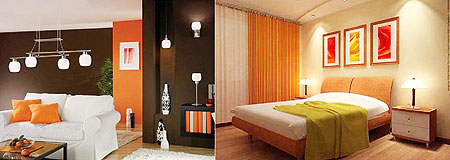Last week I dealt with the concept of transforming your living space. Over the next few weeks, I would like to introduce a series of articles to draw your attention to important aspects of redecorating your home in order to bring it together beautifully. Light is one thing we can’t do without. How you illuminate your house is an essential part of decorating. Lighting, if done well, will ultimately have a huge impact on the atmosphere of your home.


Last week I dealt with the concept of transforming your living space. Over the next few weeks, I would like to introduce a series of articles to draw your attention to important aspects of redecorating your home in order to bring it together beautifully.
Light is one thing we can’t do without. How you illuminate your house is an essential part of decorating. Lighting, if done well, will ultimately have a huge impact on the atmosphere of your home.
There are three guidelines to take into account when considering lighting; function, mood, and harmony.
What is a room’s function?
Each room has one or more functions. The key question to ask here is, "what will I use this room for?” Your answer should then help you to apply lighting which is consistent to the room’s function.
Let me illustrate this point further by using an example of a home office. The function of a home office is to provide an environment where you read and work with a computer.
Therefore it is important to fix several soft lights to enable these activities to be done without straining your eyes. Florescent lights are very harsh and are known to irritate eyes; therefore, they should be avoided in such an environment.
Considering the lighting of a bedroom, put in mind that it is a place to create a calm and peaceful atmosphere, therefore slightly dimmed lights should be used.
If you often read in your bedroom, place one or two reading lamps by your bedside table.
British interior designer Roger Banks, interestingly states that, "Any room, whatever its size, looks better with many little pools if light rather than a general glare.”
Decide on a mood
Once the room’s function is determined, decide what mood you want it to reflect. The mood of a room creates an atmosphere which will influence the way you feel as you spend time there.
A brightly lit room is more likely to trigger an energetic and positive mood while a room with dimmer light fixtures will reflect a warm and cosy atmosphere.
Different moods can also be created if a variety of lights with different intensity levels are fixed. This will provide the opportunity to change the look and feel of the room to reflect your mood.
Your choice of colours and the density of furniture can influence the level of light in a room. For example, fair colours reflect light while deep colours absorb light and cause a room to seem smaller.
Create Harmony
Lighting, like other elements in a room, should have a unified effect. Where this has been successfully achieved, there is a resultant atmosphere of a state of peaceful existence and agreement, known as harmony.
The lighting provided in your home should avoid monotony and instead convey a blend of variety and complement each other.
You can bring in variety by fixing lights at different heights, or having illumination flow in different directions.
Capture natural light
Natural light is God given, and free! We must make use of it and welcome it into our homes in the right amounts.
Natural light plays an important role in our living environment. It creates several atmospheres and moods in any room and also as the day evolves, we get the opportunity to conserve electricity.
The amount of natural light that flows into a room depends on many factors; for example, the size and type of windows and the direction in which the rooms and doors are facing.
Fixing lightly-woven curtains or lining is a great way of allowing decent amounts of light to filter into a room without straining the eye.
It has been proven that natural lighting in interior spaces makes people more productive. A room which does not welcome enough natural light during the day has a negative effect on its occupants.
We must take full advantage of natural lighting since it is irreplaceable.
When decorating your home, lighting should not be considered as an add-on but rather it should be integrated into the design.
In other words, you should decide on the type of lighting you want during the planning stage. It is as important as your choice of furniture, colour scheme and flooring. It contributes a lot to the overall look of your house.
Talented Interior designer John Saladino, hit the nail on the head when he said that, "Where there is no light, there is no beauty; no space without natural light is worthy of human occupation.”
The author is an expert in interior design and fashion.


